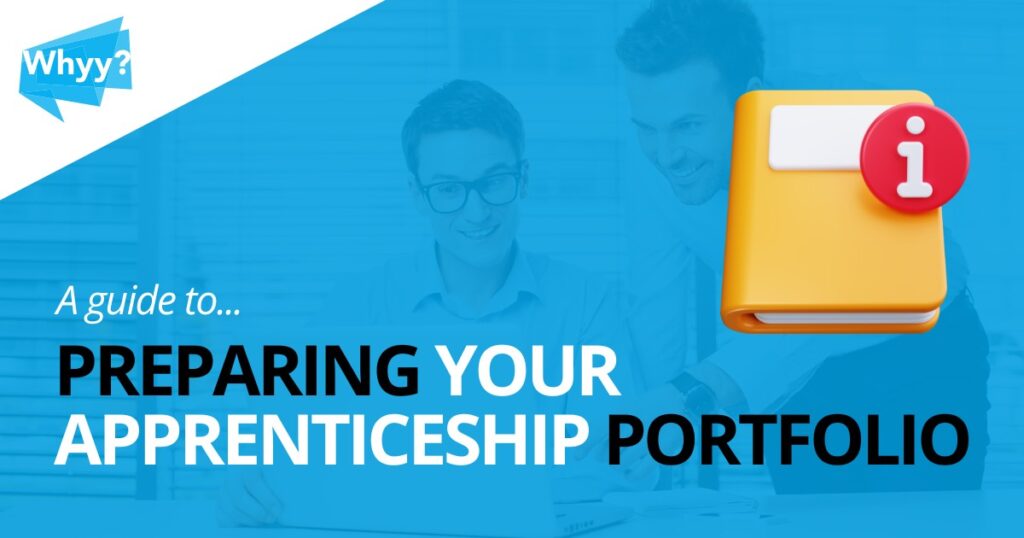TL;DR: Preparing your apprenticeship portfolio shouldn’t be a last-minute scramble. Start collecting evidence from day one, align it to your KSBs, and stay organised to reduce stress and increase your chance of achieving a distinction at End-Point Assessment.
It takes a while, when you start an apprenticeship, to understand what is required when you are preparing your portfolio of evidence for your End-Point Assessment (EPA).
It seems a long way away before it will be needed, but if you take action from the start, the end will be so much simpler.
Now, obviously, all apprenticeships will have slightly different requirements, so please do talk to your tutor about specifics. This article aims to provide you with general advice which will help you along the way when it comes to preparing your apprenticeship portfolio of evidence.
Applying your learning
The whole point of an apprenticeship is that you take what you learn and either do things differently or do new things at work.
It’s not like school, college, university, or even courses you may have been on in the workplace… an apprenticeship is practical…
And before you turn off, thinking we’re only talking about apprenticeships in plumbing or to be a chef…
We’re not.
Here at Whyy? Change our apprenticeships are in, let’s say, ‘the professional services’… management and Leadership, Marketing, HR, Quality HSE, and Lean Six Sigma.
These are still practical courses because you apply your learning in your workplace.
Not at the end of the course… but continually, all the way through.
And that’s why you need to begin preparing your apprenticeship portfolio from the start.
Why you should start early
If you’re on an apprenticeship, preparing your portfolio of evidence is a key part of your End-Point Assessment (EPA), and it starts from day one.
It might seem like your End-Point Assessment is a long way off, but starting your apprenticeship portfolio early will save you countless hours and unnecessary stress later on.
Can you say you can clearly remember what you did at work in a particular week or on a particular day a year ago?
Hardly anyone can.
You might be able to look in your diary and see if you had any meetings, etc, but can you honestly say you can remember all the other activities you did on that day in detail?
Your portfolio is a collection of evidence to demonstrate that you did something differently or something new in your workplace.
If you don’t start thinking about it at the beginning of your apprenticeship, chances are you won’t remember what you did by the end and so gathering evidence is going to be so much harder, and incredibly time-consuming.
Don’t worry, you won’t start drafting the actual portfolio straight away, but keeping a file of evidence from the start is absolutely the way to go.
More on that in a mo…
Understanding KSBs (Knowledge, Skills, Behaviours)
Every apprenticeship standard is based around a set of Knowledge, Skills and Behaviours, or KSBs. Your portfolio needs to show how you’ve demonstrated these throughout your programme.
From the start of your apprenticeship, it is useful to know and understand the related KSBs because this will massively help you when preparing your apprenticeship portfolio.
K = Knowledge
S = Skills
B = Behaviours
The learning your apprenticeship provides should add to your knowledge… so that you develop new and enhanced skills… and change your behaviour accordingly.
Your apprenticeship will have a list of KSBs that you need to meet in order to move through to your End-Point Assessment (formal name ‘Gateway’).
Through providing evidence of your work and activities and writing a narrative of exactly how that evidence meets the KSBs you’re given will get you started preparing your apprenticeship portfolio.
Understanding the KSBs from the beginning helps you focus your learning and ensures you collect the right evidence as you progress.
Preparing your apprenticeship portfolio – What counts as evidence?
Your evidence should reflect how you’ve applied what you’ve learned in the workplace. Depending on the subject area of your apprenticeship, your evidence could include, but is not limited to, any of the following types of evidence…
In the main, evidence will be
- Documentation (e.g. meeting notes, project plans)
- Screenshots
- Presentation slides
- Photographs
- Video
So, for example, let’s say your apprenticeship is covering the subject of project management in one of its modules. Your evidence may be copies of documents relating to project meetings (agendas, minutes, etc) … It may be a screenshot of a diary entry showing you’ve arranged a meeting… It may be a copy of a risk register you’ve created…
Think about what you’ve learned in your tutor sessions and how you’ve used that new knowledge in the workplace.
Create a dedicated folder labelled ‘Apprenticeship Portfolio of Evidence’ and save everything relevant.
Alongside this, use a spreadsheet to track each file, what it is, and which KSBs it supports. This will help you easily identify what you’ve covered and what’s missing when it’s time to compile your draft.
Honestly, it is never too early to start gathering evidence.
Apprenticeship portfolio tips from a distinction apprentice
Who better to get advice from than someone who’s been there? Millie Wilkinson, a former Level 4 Marketing Executive Apprentice with Whyy? Change, shares her five top tips for preparing your apprenticeship portfolio. Millie achieved a Distinction and is now working through her second apprenticeship in marketing.
How to organise your apprenticeship portfolio
By the halfway mark of your apprenticeship (around month six), you should aim to have a draft of your portfolio ready for review. Share a sample with your tutor early on to get feedback and make sure you’re on the right track.
Some people find this easier than others.
If writing isn’t your strong suit, don’t panic. Tutors can guide you on how to write narratives and map your evidence effectively. Some people may need a little help mapping the KSBs to the evidence. Others are absolutely ok with it all.
If you need help with this, the EPAO guidance documents are a good place to start. We call these “bibles” as they detail the grading descriptors, and they will help you shape your portfolio to meet the standards expected at assessment.
Our recommendation would always be to send your tutor a first draft of one piece/bundle of evidence way in advance of your submission date. Your final End-Point Assessments will be based on the portfolio you produce, so it has to be good. The portfolio is not marked, but it is used to underpin your professional discussion.
Never think you can ‘fudge’ your evidence.
Your assessor will ask you questions based on your portfolio – you need to know it inside out and be able to describe the scenarios which lead you to do whatever you did.
If you do leave preparing your apprenticeship portfolio right up to the last minute you will be putting yourself under an enormous amount of pressure.
You’ll also be putting your tutor under the same amount of pressure, and then the time they will have available to help you may well be constrained.
Balancing Work, Life, and Your Apprenticeship whilst Preparing Your Apprenticeship Portfolio
Having a healthy work-life balance can be difficult at the best of times, but then throw into the mix your apprenticeship and the reality is, that for many, it can be even more tricky. Leaving your portfolio until the last minute only adds pressure.
If you leave preparing your apprenticeship portfolio right to the end of your apprenticeship, you are going to have to put hours of additional work in – and where are those hours going to come from?
Your OTJ hours can still be used here, so make sure you’re still taking them and finding time away from your day-to-day activities to complete your portfolio.
You know how you work best.
You know what commitments you have.
Speak to your tutor early on in your apprenticeship and talk to them about how to collect your evidence and the best way to keep on top of preparing your apprenticeship portfolio.
Don’t forget to also speak to your line manager, they may be able to support you if you are struggling to balance work activities and your apprenticeship.
Tutors will know EPA requirements depending on your apprenticeship and End-Point Assessment Organisation (EPAO).
We promise it will pay dividends; it will minimise your stress levels and save you, and your tutor, hours of time.
Final Thoughts
Your apprenticeship portfolio is your opportunity to showcase how far you’ve come and how you’ve applied your learning. It’s your story, told through evidence.
Already thinking about what’s next for your professional development? Speak to our team today about your next apprenticeship or professional qualification with Whyy? Change and advance your career. Simply fill out the form below to get started!

